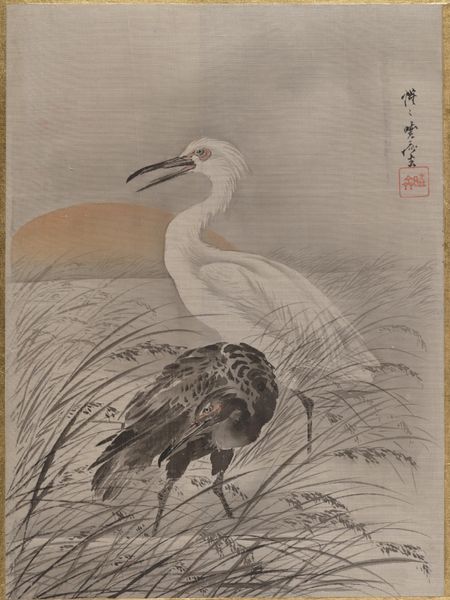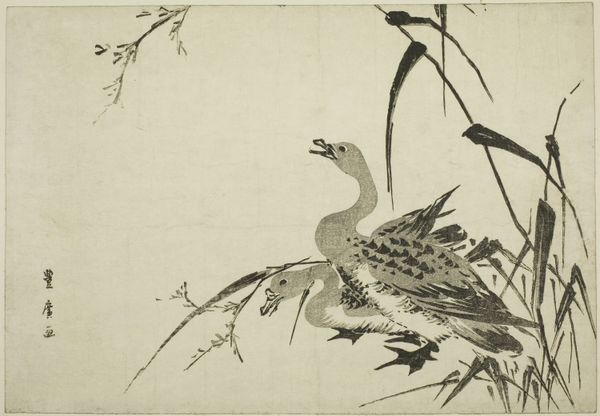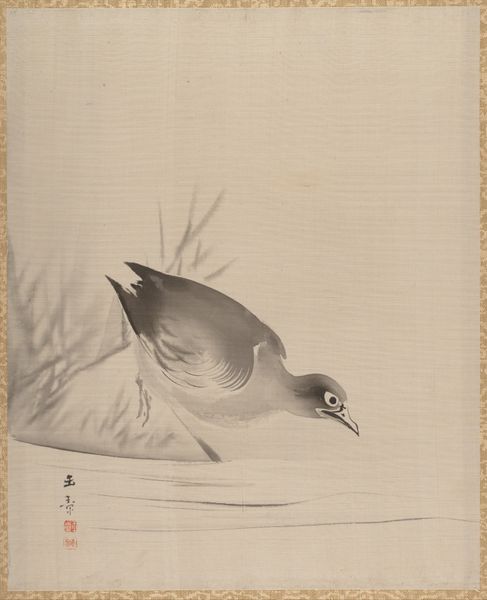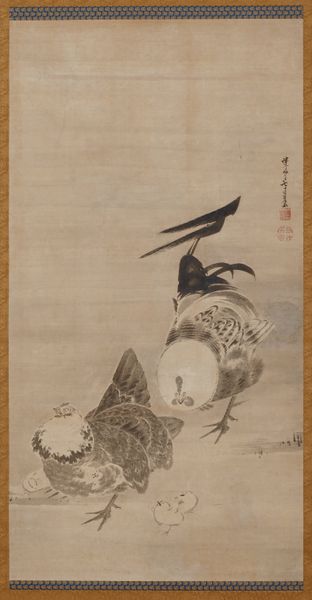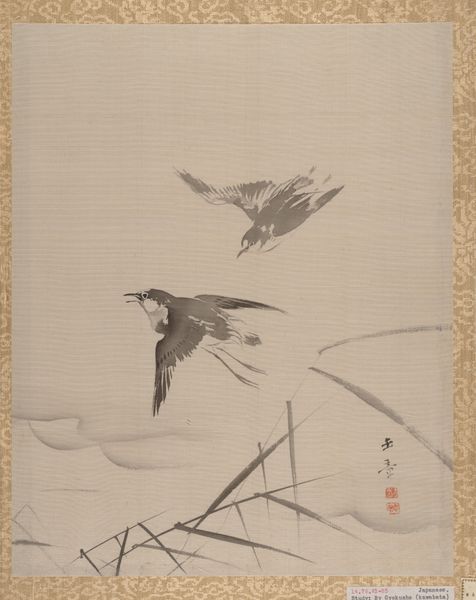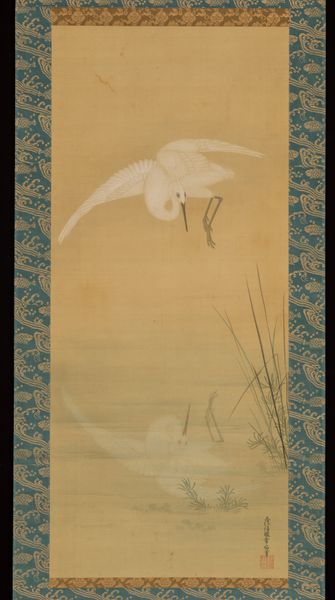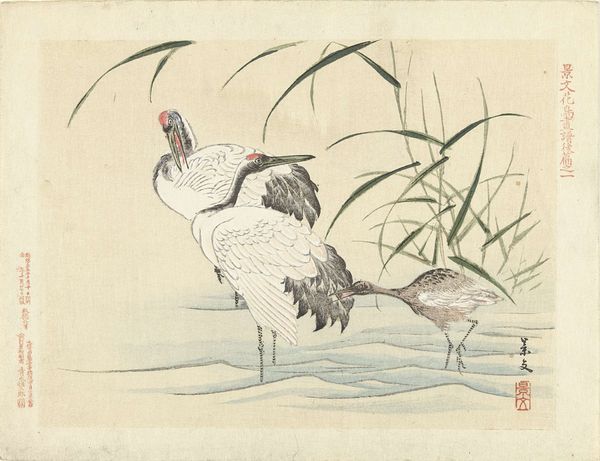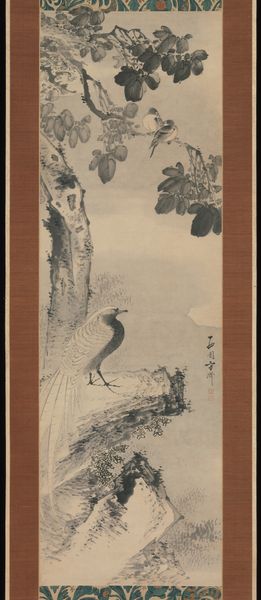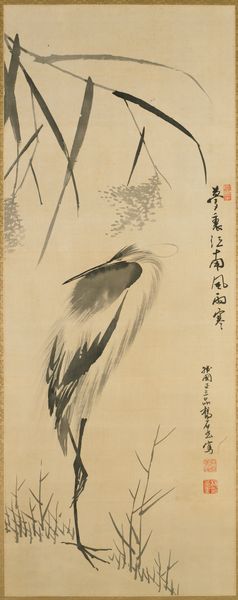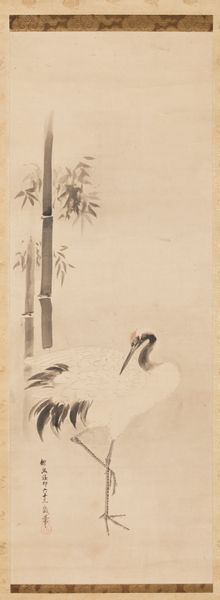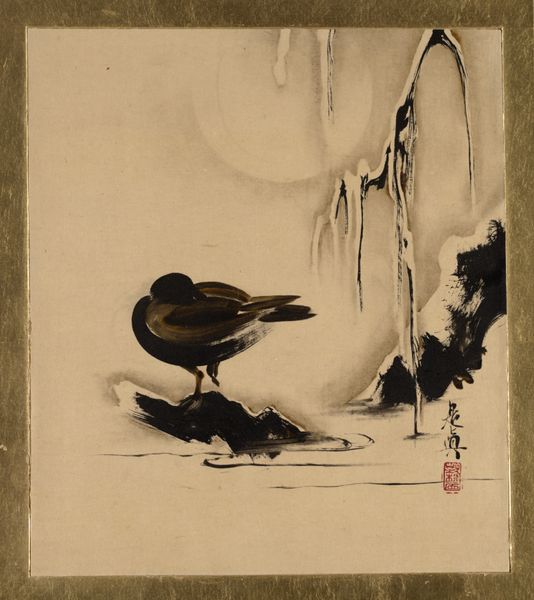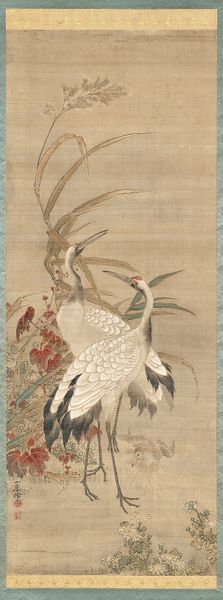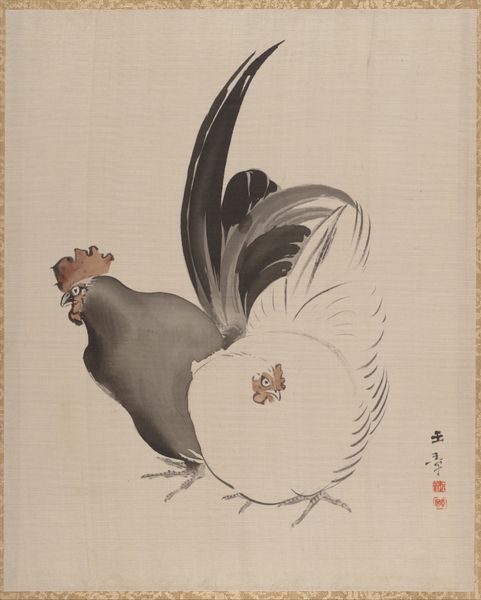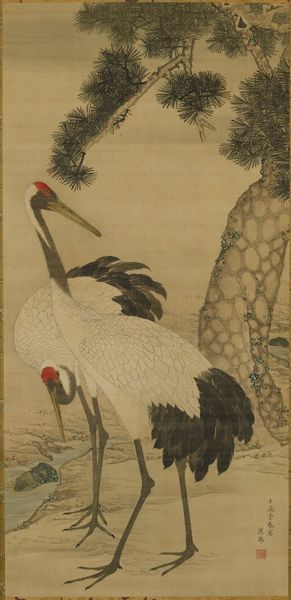
watercolor
#
water colours
#
asian-art
#
landscape
#
figuration
#
watercolor
#
line
#
24_meiji-period-1868-1912
#
watercolor
Dimensions: 13 1/2 x 10 7/8 in. (34.3 x 27.6 cm)
Copyright: Public Domain
Curator: I'm struck by the serenity of this watercolor—almost ghostly in its delicacy. The single crane standing amongst the reeds… it’s the epitome of quiet contemplation. Editor: Indeed. What we're observing is Kawabata Gyokushō's "Crane Among Reeds," likely painted between 1887 and 1892, during Japan’s Meiji period. A period where traditional art forms found themselves at an intersection with rapidly modernizing influences. Curator: Right. The Meiji period was fascinating, wasn't it? This piece feels both steeped in tradition and also subtly rebellious in its simplicity. There's a restraint here, a deliberate paring down to essentials, that speaks volumes. You can almost feel the stillness of the marsh. Editor: Exactly. It highlights the established tension between preserving artistic heritage and adapting to the modern world. The choice of subject matter – the crane, a traditional symbol of longevity and good fortune in East Asian cultures – speaks to the reverence for the past. Curator: And yet, look at the composition. It’s asymmetrical, almost sparse. It makes you think about negative space, about what’s not being shown. Is that rebellion or respect? Perhaps it’s both. I’d say there is nothing else here, and at the same time it suggests much. Editor: A beautiful synthesis, I believe. What's crucial is recognizing how art serves the politics of imagery. The crane became a carrier for collective dreams, desires for harmony amid drastic socio-political shifts. It's interesting to consider the original audience for art. Was it ever for people like us? Curator: The very sparseness makes it intimate and personal, like a private meditation, doesn’t it? It feels so fragile. It whispers, where other paintings shout. You wonder, as well, where is the crane looking at? What does it mean in Japanese culture at that time? Is it thinking? Editor: A powerful visual echo across time and cultural landscapes. Curator: Exactly. That sense of quiet is perhaps what endures most, in the end. A little moment of calm held still on silk, offered to the viewer as if by magic.
Comments
No comments
Be the first to comment and join the conversation on the ultimate creative platform.
